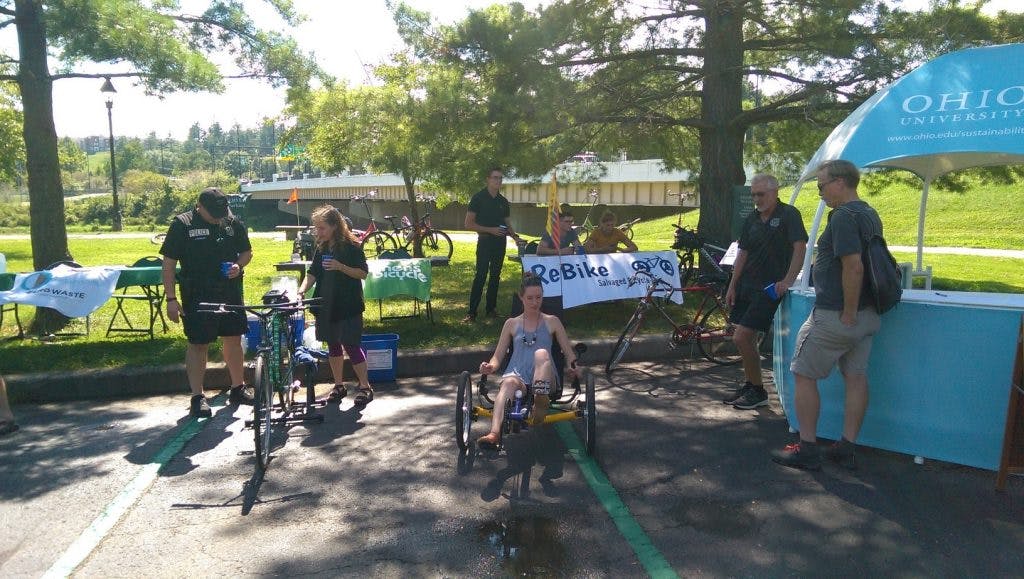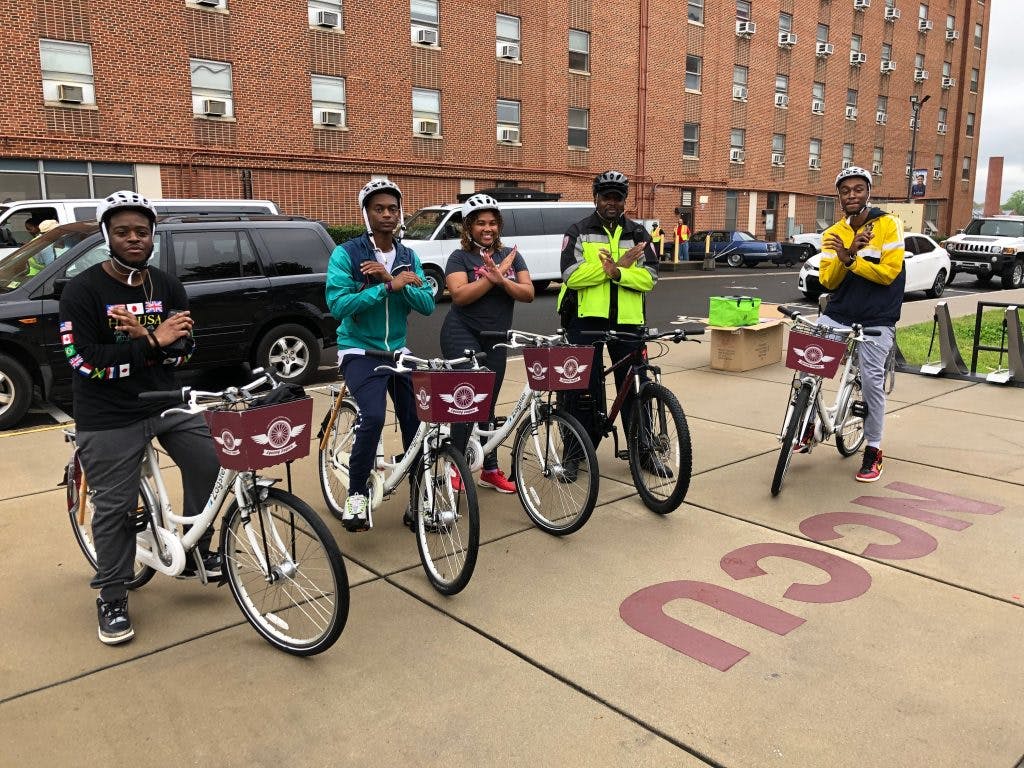Explore Our Network of Sites
Search
By:
As we take a look at our City Ratings top-25, there are clearly some lessons that we can learn from college towns about supporting infrastructure. Here are some traits that allow for college towns to be great places for biking:
Let’s take a look at some of our highest rated college towns from the 2019 City Ratings.
PeaceHealth Rides — Eugene’s Bikeshare program — originated on campus with the University of Oregon’s bike program and funding from the student government. The city then received funding for a city-wide bikeshare system, and the final implementation was through a partnership between the city, the local transit agency, and the university.
According to Kelsey Moore, the University of Oregon Bike Program Coordinator and member of Eugene’s Active Transportation Committee, each year they include students on the committee, and hand out out safety messaging from the city and state departments of transportation. These relationships help everyone involved feel like they’re part of something united, working to make a better place to live.
Renee Callaway, Pedestrian Bicycle Administrator for the City of Madison Traffic Engineering, says that the city partners with the University of Wisconsin in several ways. Because the university doesn’t offer parking to students, there’s a “captive audience of people who need to get around without cars,” she says. Although the lack of parking is due mostly to space constraints, this has created a bike culture throughout campus and town. And because there are so many people on bikes, there’s an overall safety-in-numbers feel.
According to Callaway, the university and the city work together to create a safer place to live, namely at intersections that were identified as dangerous in a crash study. Callaway says, “The university and downtown are interwoven. We have several off-street paths, and we’ve worked really hard with the university to improve street crossings.” Madison’s efforts to improve intersection safety comes mainly from a dedicated budget for annual bike and pedestrian improvements. Callaway says that having funds available for small projects makes a huge difference in keeping the city up to date. Such projects include green treatments on the streets, rectangular rapid-flash beacons, and signage at crossings, which all contribute to people feeling safer.

Sam Crowl, Associate Director of the Office of Sustainability, says that with a student body that makes up 75% of the town’s population during the semester, the relationship between Ohio University and Athens is crucial. “Collaboration has to happen for the health of the university and the city — we’re proud of the strong relationship between administrators and city officials.” Athens mayor, Steve Patterson, is a former OU professor and continues to take an active role on campus.
Crowl says a 21-mile bikeway that now connects the whole city, the county and even other towns, started on the campus of Ohio University. This offers students, those who work at the university, and the entire community a safe and protected option for recreational riding. The Office of Sustainability at OU also offers bicycle valet service for home football games. The stadium is right off the bikeway, so it’s a great way to encourage the community to ride to the games.
At the end of every school year, OU holds a “re-bike” salvaged bike sale, which allows people from the community to purchase an affordable bicycle that’s been abandoned on campus. Crowl is hopeful that the university can continue to encourage more people to use bikes as transportation. Now that Ohio allows e-bikes on paths, that could be the next big thing to hit OU’s campus.

Working together, a city and a university can create a more complete network for everyone to take advantage of. The city of Durham works with several schools to increase ridership in the area. Dale McKeel, City of Durham MPO, says relationships between the universities and the city can lead to projects getting approved and finished in a more timely manner.
Durham is currently working to connect the North Carolina Central University campus to a recreational and commuting trail in the area. McKeel says, “NCCU staff have enthusiastically supported a proposed bicycle boulevard to connect the campus to the American Tobacco Trail.” NCCU has also partnered with the city and the NC Department of Transportation on a recently completed 4-lane to 3-lane roadway reconfiguration on Fayetteville Street on the south side of the campus.
Recommendations for joining efforts with a college campus: